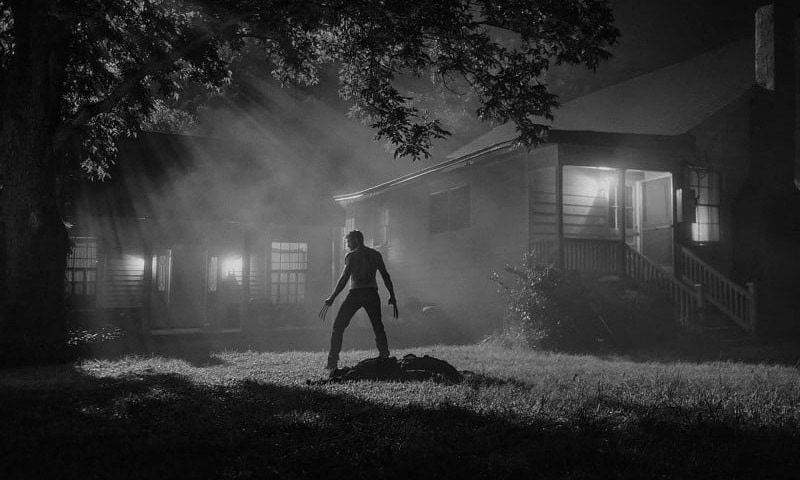The first time I stumbled across a black-and-white promotional still of Stephen Merchant’s Caliban in Logan Noir, I lost my breath. Here was this gunslinging golem, stooping in the dark, punctured by beams of light. It was inconceivable to me that this was a character from an X-Men movie. There was a gravity to this photograph I hadn’t come to expect from superhero films, from a genre that routinely confuses brooding for depth.
Director James Mangold took photographs on Logan‘s set and noticed how strikingly the film translated to black-and-white. More specifically how “the western and noir vibes of the film seemed to shine in the form and there was not a trace of modern comic hero movie sheen.” Mangold and DoP John Mathieson “shot lotsa night w/ sculptural black & sidelight separating actors from [the background].” They “were making a color film but were all conscious that the hard edge lighting schemes would play well in monochrome.” The stills, wisely used for promotion, offered a visual shorthand for Mangold’s startling vision of a well-trod franchise. It wasn’t long before rumors of a black-and-white cut began to percolate. These suspicions were recently confirmed, with the justly-named Logan Noir receiving both a home video and limited theatrical release.
Beyond being aesthetically pleasing, in black-and-white, Logan reaffirms its family resemblance to Westerns like Shane, The Shootist, and Unforgiven; late-career films where a weary beloved character lurches out of retirement for one last job. In this way Logan’s monochrome evokes a dignified severity befitting a send-off. As film critic Brian Tallerico notes, the real villain of Logan is time. That we’re bearing witness to a decaying past is implicit in the monochrome itself.
Logan Noir’s announcement spurred some critics to label monochrome remasters a “trend.” This is particularly unfair slander because there are too few examples for it to be even remotely considered a movement. As for the accusation that black-and-white cuts are pretentious gimmicks —one has only to look at the history of black-and-white remasters to see that they come from a place of directorial purpose. That, overwhelmingly, rather than being a shtick for shtick’s sake, the monochrome is narratively justified.
